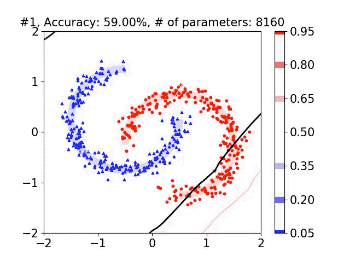Neural Plasticity Networks
Neural plasticity is an important functionality of human brain, in which number of neurons and synapses can shrink or expand in response to stimuli throughout the span of life. We model this dynamic learning process as an $L_0$-norm regularized binary optimization problem, in which each unit of a neural network (e.g., weight, neuron or channel, etc.) is attached with a stochastic binary gate, whose parameters determine the level of activity of a unit in the network. At the beginning, only a small portion of binary gates (therefore the corresponding neurons) are activated, while the remaining neurons are in a hibernation mode. As the learning proceeds, some neurons might be activated or deactivated if doing so can be justified by the cost-benefit tradeoff measured by the $L_0$-norm regularized objective. As the training gets mature, the probability of transition between activation and deactivation will diminish until a final hardening stage. We demonstrate that all of these learning dynamics can be modulated by a single parameter $k$ seamlessly. Our neural plasticity network (NPN) can prune or expand a network depending on the initial capacity of network provided by the user; it also unifies dropout (when $k=0$), traditional training of DNNs (when $k=\infty$) and interpolates between these two. To the best of our knowledge, this is the first learning framework that unifies network sparsification and network expansion in an end-to-end training pipeline. Extensive experiments on synthetic dataset and multiple image classification benchmarks demonstrate the superior performance of NPN. We show that both network sparsification and network expansion can yield compact models of similar architectures, while retaining competitive accuracies of the original networks.
PDF Abstract


 CIFAR-10
CIFAR-10
 CIFAR-100
CIFAR-100
 MNIST
MNIST